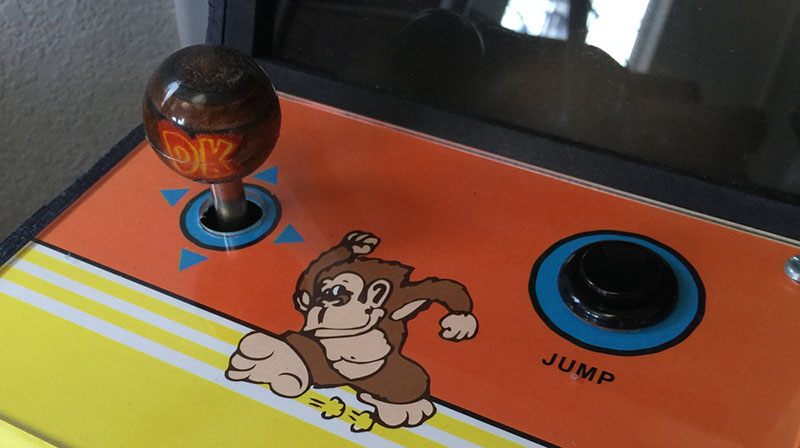[Florian] has a few arcade games and MAME machines, and recently he’s been trying to embed objects in those hard plastic spheres on the end of joysticks. A common suggestion is to 3D print some molds, but even though that’s a great idea in theory the reality is much different: you’re going to get layer lines on the casting, and a mirror finish is impossible.
No, a silicone mold is the way to do this, but here 3D printing can be used to create the mold for the silicone. Instead of a few pieces of hot glued cardboard or a styrofoam cup, [Florian] is 3D printing a a container to hold the liquid silicone around the master part.
After printing a two-piece part to hold both halves of a silicon mold, [Florian] put the master part in, filled it up with silicone, and took everything apart. There were minimal seam lines, but the end result looks great.
In addition to making a 3D printed mold container, [Florian] is also experimenting with putting 3D printed parts inside these joystick balls. The first experiment was a small 3D printed barrel emblazoned with the Donkey Kong logo. This turned out great, but there’s a fair bit of refraction that blows out all the proportions. Further experiments will include a Pac-Man, a skull, and a rose, to be completed whenever [Florian] gets a vacuum chamber.















This is part of the reason I’m getting a printer, mold making for plastic and aluminum. A little acetone vapor treatment and some finishing is required, sure, but it’s well worth it.
I would suggest avoiding FDM printers, the type that squirts plastic, if you’re making molds. If you can get a DLP or SLA printer. The quality is much better and because you will be casting a new part, the original can be mostly hollow reducing the resin cost.
I use an FDM and getting rid of the printing lines is a pain. Vapor baths aren’t the sort of thing I( and by “I” I mean my significant other) like doing in my condo and parts often break while sanding.
I use an FDM printer to direct-print moulds for parts cast out of flexible resins. If your process permits it, you can get nice reusable moulds with FDM very quickly, and for much cheaper than SLA. That said, print texture isn’t an issue in my application. The SLA printer (Form 1) I have wasn’t worth the cost of shipping it to Australia, and we have had only a handful of useful parts from it.
I’m looking into getting an SLA printer, what was the issue with the form1?
I’ve never tried direct printing molds! Please let me know what filament you use.
Get a e3d hotend with a .2 mm nozzle. You will have.1 or .05 mm layers heights and very little finishing
I have tested FDM molds (using ABS) and were relatively successful molding polypropylene. Could get several shots before the mold’s gate area eroded. We are in the process of trying SLA-based molds, so far our initial mold has run multiple ABS shots. It has been an interesting side project.
An opportunity presents itself in 3d printing the objects to be embedded in the joystick “ball”.
One could possibly account for the refraction by distorting the source 3d model’s geometry and then printing this “pre-distorted” part.
A much cheaper solution to using silicone for casting is to use gelatine (Jello) and glycerin. Not only does it have the rubbery consistency of silicone, is far less expensive, is non-toxic, it doesn’t stink, it can also be re-used by melting it in the microwave. Glycerin acts as a plasticizer to turn gelatine into a durable rubber that can retain the fine details of the model to be cast. The only drawback is it has a low tolerance to heat. Search youtube for gelatine, glycerine, prosthetics.
If you want to use something that can be used to cast more than ten items before having to remake the mold and can withstand the heat of some casting agents, use a $3 tube of silicone sealant from Walmart, and mix it with cornstarch, thus eliminating the use of gelatine and glycerin.
:
Yeah I’m trying to figure out where 3d printing falls into the equation here. You have joystick balls already, just cast one and be done with it. If you want to put something in the ball when making it, you put it inside the mold when pouring your plastic/whatever. That’s how they do it with bowling balls.